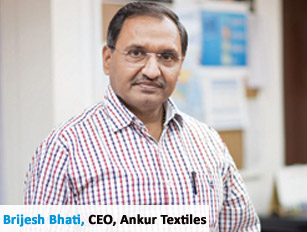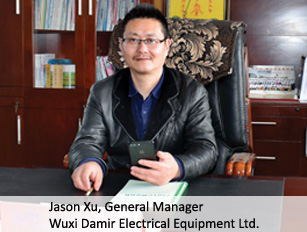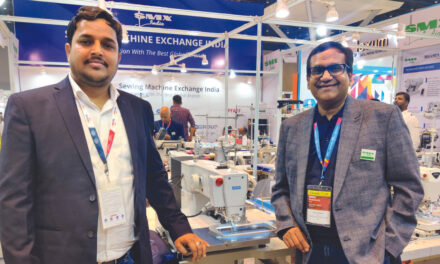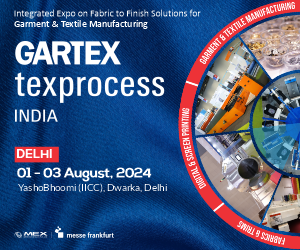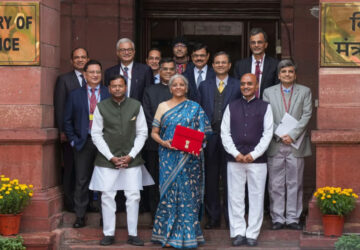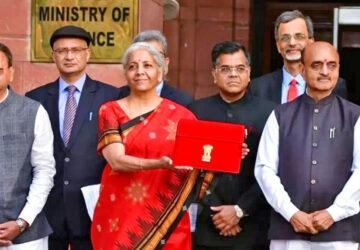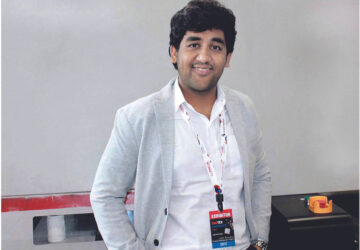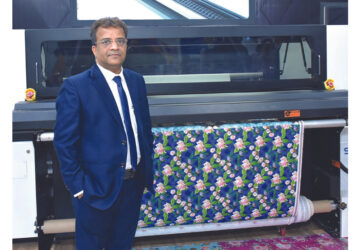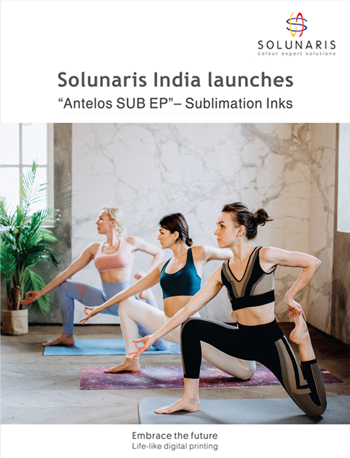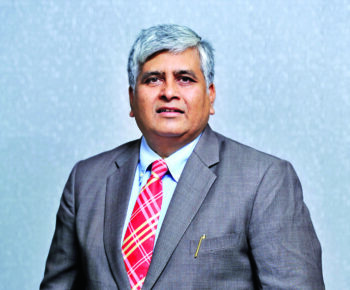
Dr. S N Modani, Managing Director and CEO of Sangam India Ltd.
Sangam India Ltd., founded in 1984, is a leading manufacturer of PV dyed yarn, cotton, and OE yarn and also ready-to-stitch fabric. The NSE & BSE listed company produces 35 mn mtrs of PV fabric and 48 mn mtrs of denim fabric annually. This magnitude of production is possible with a highly organised production base equipped with more than 2,80,000 spindles and 4,000 rotors. The group has also introduced a seamless garment manufacturing facility with 54 seamless knitting machines that have the capacity to produce 5.0 mn pieces per annum. Sangam started with only eight weaving machines in 1984 and is now recognised as a leading brand in the textile industry, with a presence in over 50 countries. Dr. S N Modani, Managing Director and CEO of Sangam India Ltd., talks about the company’s progress, future ambitions, expansion plans, current trends and more in an interview with Arvind Kumar, Editor of Apparel Views.
Can you tell us about your current setup and capacities in spinning and weaving?
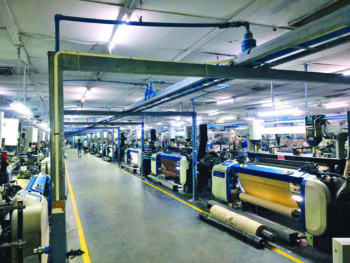 Established in 1984, Sangam India Ltd. is one of the foremost producers in PV dyed yarn, cotton and OE yarn and also ready to stitch fabric. Sangam’s spinning division is one of South Asia’s largest producers of PV dyed yarn that has now over 2,80,000 spindles and 3000 rotors, resulting in annual production of 95,000 metric tonnes. The weaving division is fully equipped with cutting-edge technology allowing for an annual output of 30 mn mtrs of fabric with circular knitting making it a fresh addition to Sangam’s vibrant fabric palette. The circular knitting plant currently has 28 knitting machines and an annual production capacity of 4700 metric tonnes. Our seamless system is designed with 54 machines capable of producing 5 mn pieces per year.
Established in 1984, Sangam India Ltd. is one of the foremost producers in PV dyed yarn, cotton and OE yarn and also ready to stitch fabric. Sangam’s spinning division is one of South Asia’s largest producers of PV dyed yarn that has now over 2,80,000 spindles and 3000 rotors, resulting in annual production of 95,000 metric tonnes. The weaving division is fully equipped with cutting-edge technology allowing for an annual output of 30 mn mtrs of fabric with circular knitting making it a fresh addition to Sangam’s vibrant fabric palette. The circular knitting plant currently has 28 knitting machines and an annual production capacity of 4700 metric tonnes. Our seamless system is designed with 54 machines capable of producing 5 mn pieces per year.
What is the share of exports and domestic sales?
Sangam has made its way despite the two challenging years that caused heavy impact on the global markets. The company has demonstrated its ability to meet these challenges by shooting their exports by 7 percent. Currently, the total sales are being divided into 60 percent in the domestic market and 40 percent in the export markets. Going forward, we would be focusing our business synergies in the international markets to not only boost Sangam’s market share but also India’s
What are your future plans?
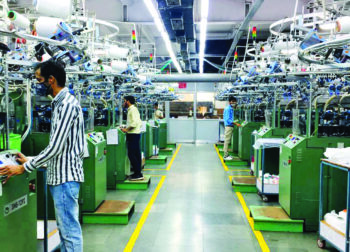
We are implementing a phased expansion strategy in both of our divisions – spinning and weaving. In addition to our existing units, a 275 cr investment in the spinning division will provide an additional production of around 18000 metric tonnes per year. Similarly, in the circular knitting segment, 157 cr will be invested in seamless garment machines to produce an additional 10 mn pieces per year.
What are the new trends and finishes in fabrics? What are the new products you have launched recently?
Anti-static, non-slip and feather touch are some of the current trends in fabric finishing. For the Spring Summer 22 collection, we have introduced jacquard hipsters and medium support activewear in our seamless circular knitting plant. By A/W 22, we plan to add a teenage line to our lingerie collection. Our priority is to add sustainable products to our collection and we are constantly working on eco-friendly business development
What is the present status of fabric mills in India? How do you look at the future the same?
Textiles are a fast-growing industry where India’s global strengths in traditional textiles and natural fibres have already been defined. India is the world’s second largest producer of polyester and is evolving as a main textiles industry. Despite the fact that sharply increased cotton rates have resulted in more expensive yarn, demand is being impacted. The industrialization of India, as well as its manufacturing competitiveness is key contributors to the growth of this segment in the near future.
What are your expectations from the government for further strengthening of this industry?
Through free trade agreements (FTAs) with major importing countries, measures should be taken to remove trade barriers which shall result in an increase in the export portion of the value chain. This will withdraw the preferential treatment given to India’s competitors and Indian origin fabric and apparel will be anticipated to be treated at par with other countries.



 Established in 1984, Sangam India Ltd. is one of the foremost producers in PV dyed yarn, cotton and OE yarn and also ready to stitch fabric. Sangam’s spinning division is one of South Asia’s largest producers of PV dyed yarn that has now over 2,80,000 spindles and 3000 rotors, resulting in annual production of 95,000 metric tonnes. The weaving division is fully equipped with cutting-edge technology allowing for an annual output of 30 mn mtrs of fabric with circular knitting making it a fresh addition to Sangam’s vibrant fabric palette. The circular knitting plant currently has 28 knitting machines and an annual production capacity of 4700 metric tonnes. Our seamless system is designed with 54 machines capable of producing 5 mn pieces per year.
Established in 1984, Sangam India Ltd. is one of the foremost producers in PV dyed yarn, cotton and OE yarn and also ready to stitch fabric. Sangam’s spinning division is one of South Asia’s largest producers of PV dyed yarn that has now over 2,80,000 spindles and 3000 rotors, resulting in annual production of 95,000 metric tonnes. The weaving division is fully equipped with cutting-edge technology allowing for an annual output of 30 mn mtrs of fabric with circular knitting making it a fresh addition to Sangam’s vibrant fabric palette. The circular knitting plant currently has 28 knitting machines and an annual production capacity of 4700 metric tonnes. Our seamless system is designed with 54 machines capable of producing 5 mn pieces per year.

